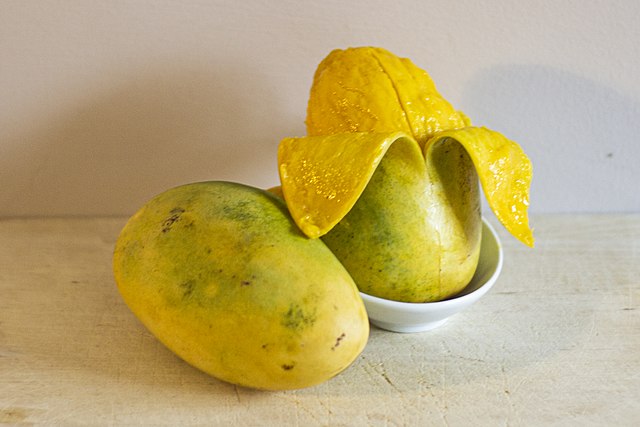Indore, the processing capital of India’a mangoes has registered a 20% retail price markup in a low-supplied seasonal start.
But this is most likely a temporarily phase as India expects a 14% jump in mango production in the 2023-24 season, ending June.
For now however, traders in Indore in Central India who usually receive the very first southern dispatches are ruing quantity imbalance. They cited a ratio of 1:2 in inbound truckloads vis-á-vis outbound trucks.
The traders told The Times of India on April 9 that arrivals from the south amount to 12 daily 18-ton truckloads. According to wholesalers, the bustling Choithram market in Indore seasonally needs up to 19 truckloads of mangoes to meet local demand.
The traders blamed heatwaves in 2023 and a two-week early start to the current season as having affected quality.
Too Pricey
Purchasing early season mangoes at Indore at this high rate has automatically set a new retail price benchmark nationwide.
Setting off the standard is the popular Badam variety, which has been retailing at between Rs 70 ($0.84) and Rs 130 ($1.56) a kg. This is in comparison with the 2023 rate in the Rs 50-100 ($0.60-1.20) range.
The Alphonso variety, too, has attracted a steep price hike, even in bulk quantities. At Rs 2,500 to 3,200 ($30.02 to 38.43) per 16 kg crate, it is twice costlier than 2023’s lowest Rs 1,600 ($1,922) a crate.
Turn to Other Varieties?
It may seem strange that India is facing shortage when there are 1500 mango varieties across diverse climatic regions. The “king of fruits” boasts 1000 commercial cultivars, which means produce from every 6 out of 10 trees goes into sale.
The most popular commercial types include the ubiquitous Alphonso from Maharashtra with its sweet juicy flesh.
There are also Totapuri from the south with its pulpy content and the Gujarat-grown costly Kesar variety.
Production First rank
Southern India produces 50% of national mangoes and kick-starts the seasonal opener each spring. Sometimes low supplies from here fail to anticipate the mid-season output from northern and eastern India.
Despite local shortage, India supplies approximately 50% of the global mango output, from 18 to 20 million tonnes a year.
Besides, the country and its Indus valley neighbors, Pakistan and Bangladesh, together boast the origin of the mango (Mangifera indica).
The fruit is important for food security in the subcontinent, serving as a healthy refreshment alternative during the Indian summer.
To date, there are over 2.31 million acres of mangoes in India distributed across its sub-tropical growing belt.
